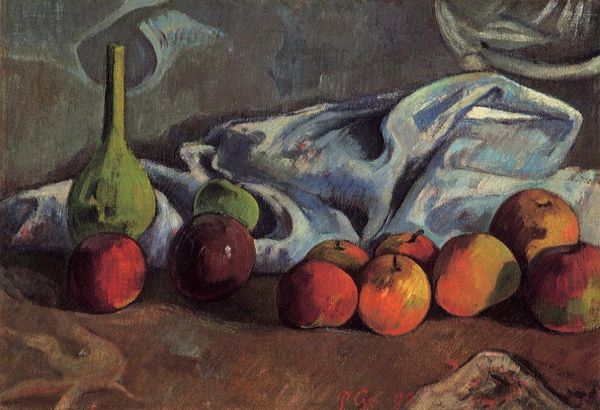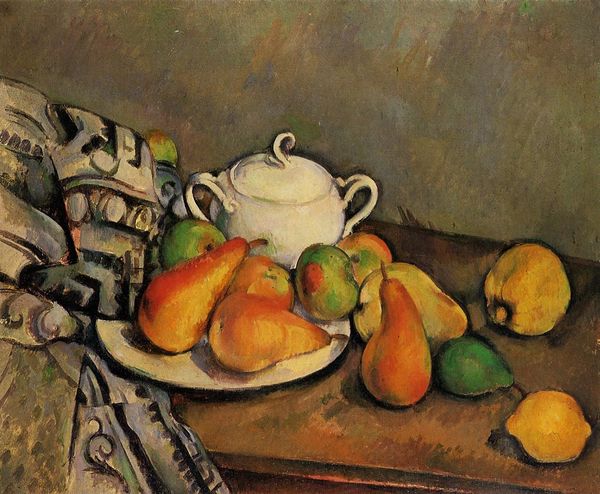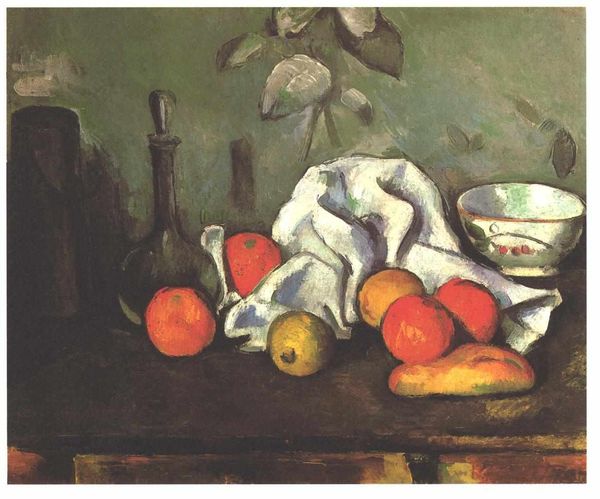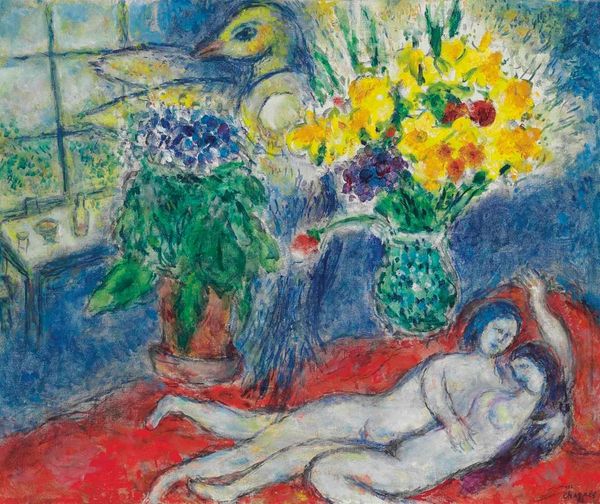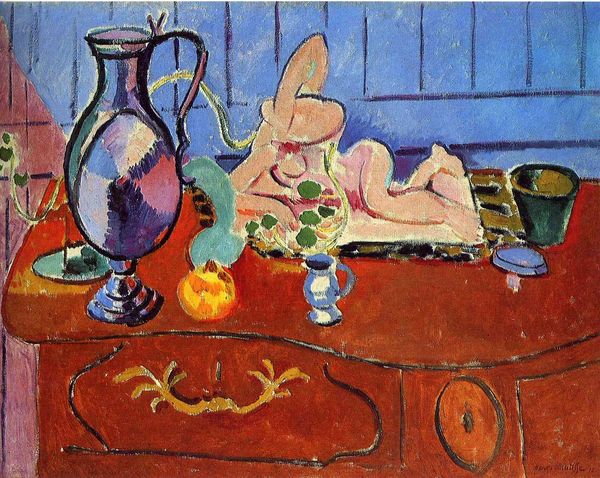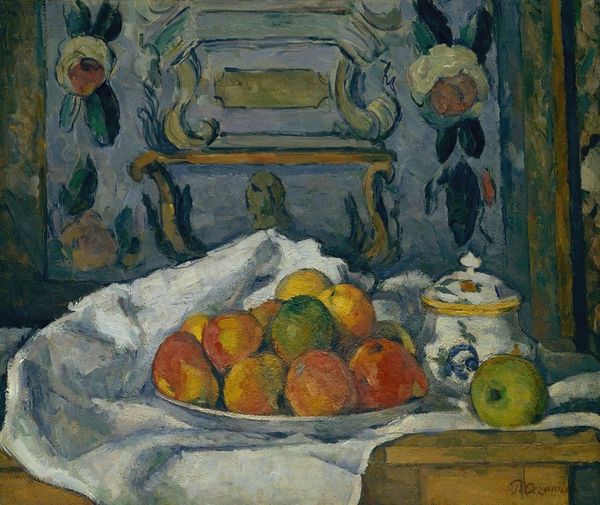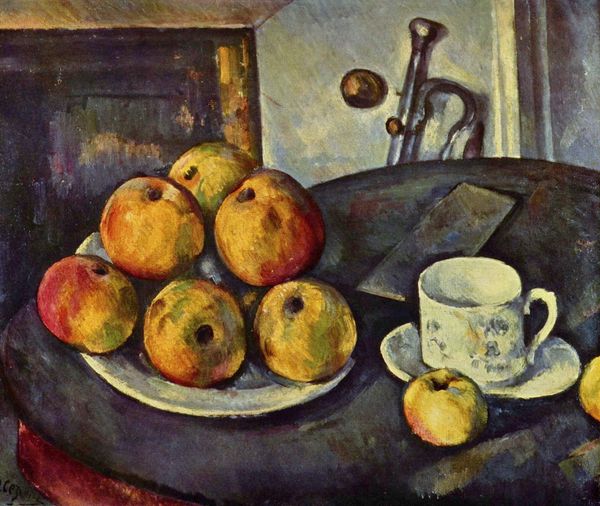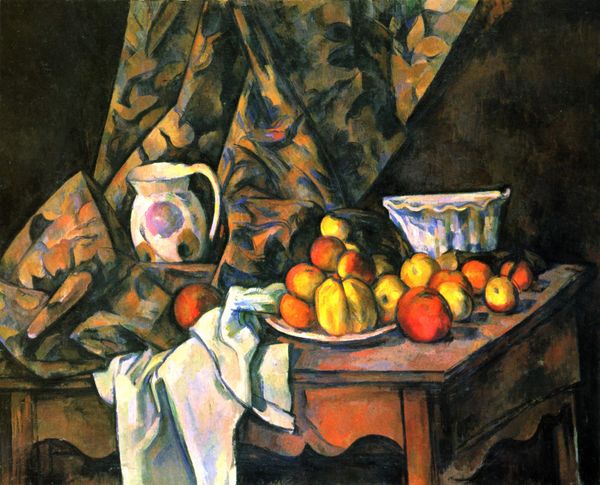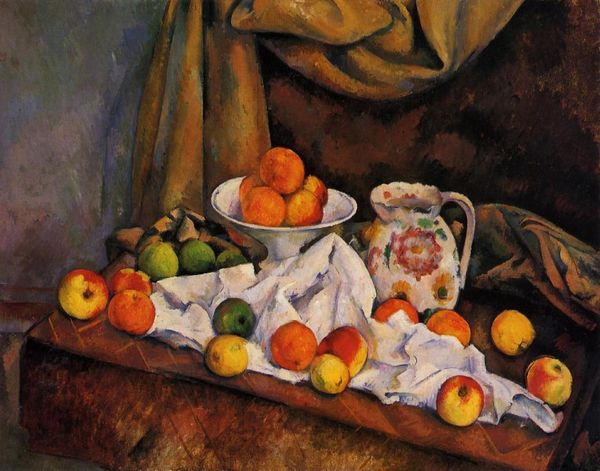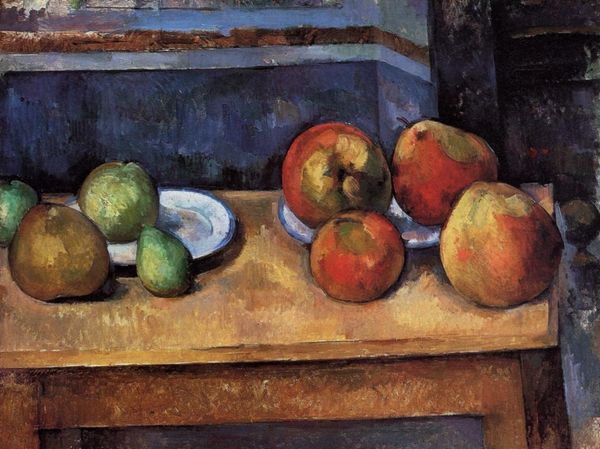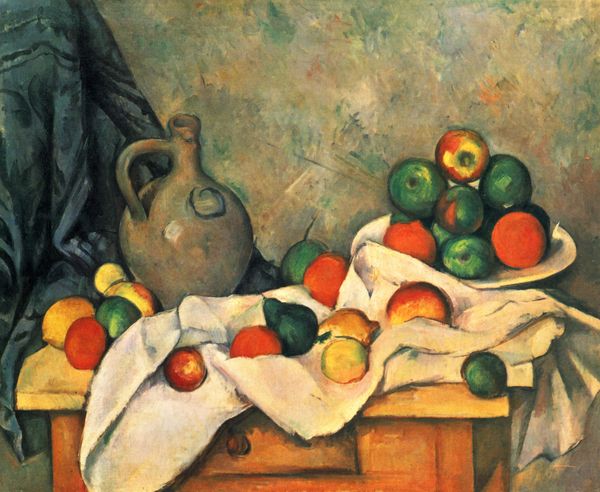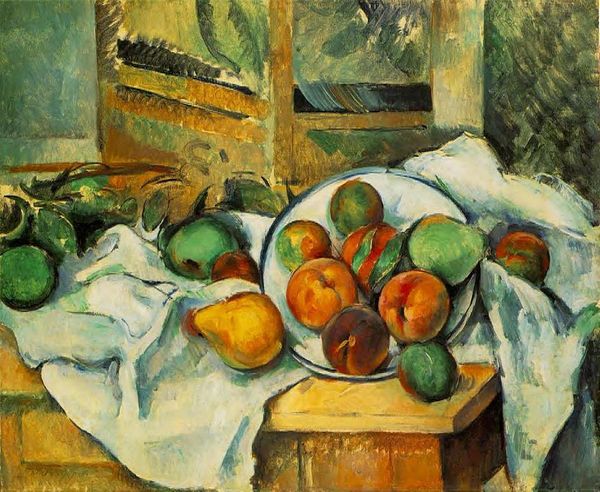
oil-paint
#
portrait
#
still-life
#
oil-paint
#
figuration
#
form
#
oil painting
#
studio composition
#
classicism
#
post-impressionism
Copyright: Public domain
Curator: This painting is Paul Cézanne's "Still Life with Plaster Cupid," completed around 1895. Cézanne was instrumental in bridging Impressionism and Cubism. Editor: What strikes me is the tension. The broken cupid, almost carelessly posed, the soft, vulnerable fruit arranged so deliberately. There’s an undercurrent of mortality in all this idealized form. Curator: Indeed. Placing a classical sculpture alongside everyday objects like fruit allows Cézanne to explore the intersections of art and life. Consider the societal context of the late 19th century, with its focus on classical ideals juxtaposed with the burgeoning modern era. He uses these symbols of romance in tension. Editor: Right, and the Cupid, typically a symbol of love and beauty, is presented here damaged, an arm missing. The fruit too hints at fleeting pleasure, positioned together they suggest something has soured in an idealized state. Curator: And isn’t the materiality significant here? Cézanne layers oil paint thickly, defying the academic smooth finish of classicism. We must think about him deliberately pushing against those prescribed styles in his lifetime. The painting's very surface becomes a battleground of tradition and innovation. Editor: Absolutely, and if we look closely, Cézanne subverts our expectations of depth and perspective. Objects feel slightly skewed, challenging our perceptions of reality, of love. What did love mean in such a disruptive age? Curator: Yes, and he encourages a re-evaluation of what painting, and indeed what our whole society could be! I find the subtle shift towards abstraction and conceptualism foreshadows the artistic revolution to come. It seems he is not against Cupid; it is that societal constraints need breaking down! Editor: I think this really speaks to our current times, that struggle with tradition, especially with a damaged Cupid presiding. It serves as a potent symbol of love's endurance through all these cultural shifts. Curator: It invites reflection on how we navigate those pressures even today. Thanks for that wonderful discussion, it is never straightforward, is it? Editor: Not at all; and the visual dialogue the piece provides resonates far beyond the era it was painted in. Thanks.
Comments
No comments
Be the first to comment and join the conversation on the ultimate creative platform.

